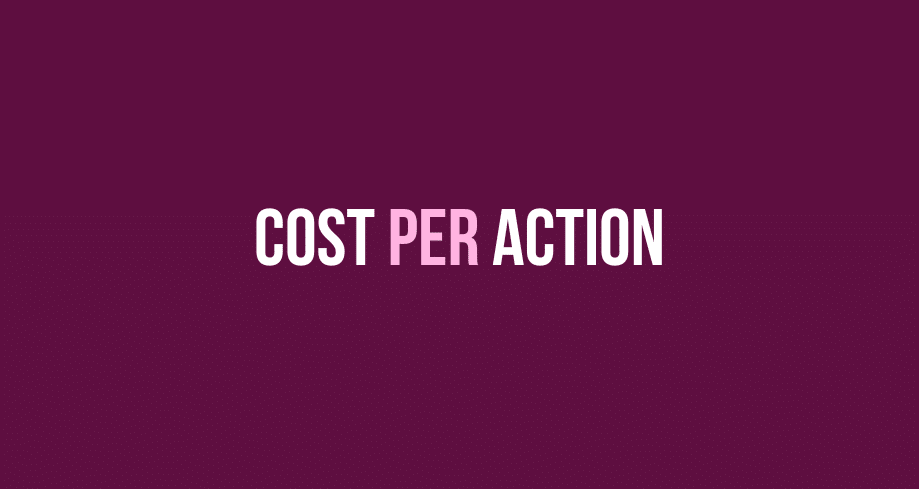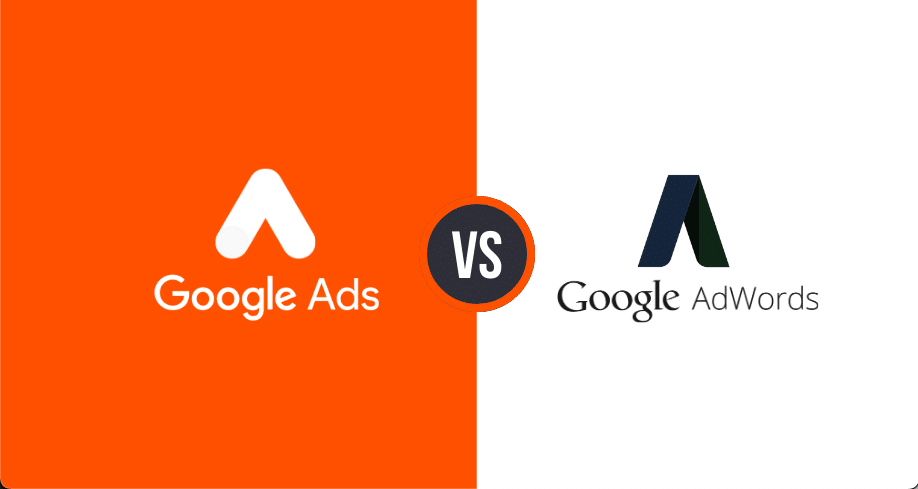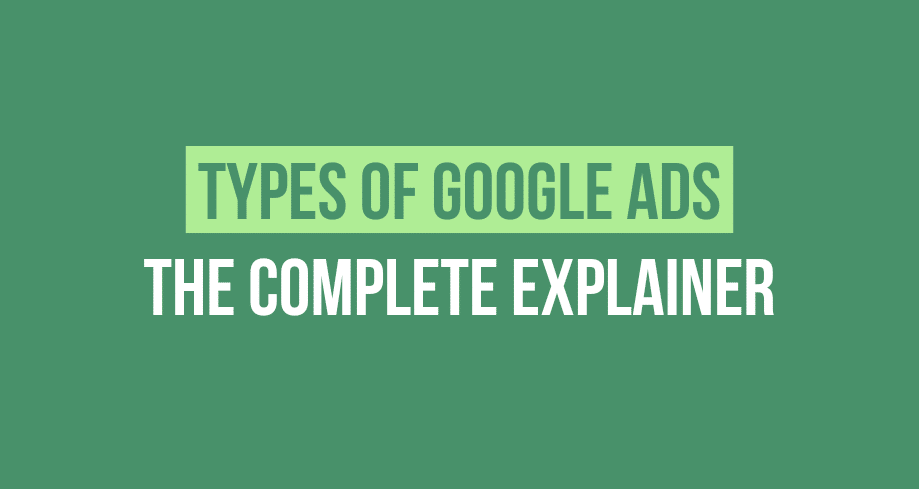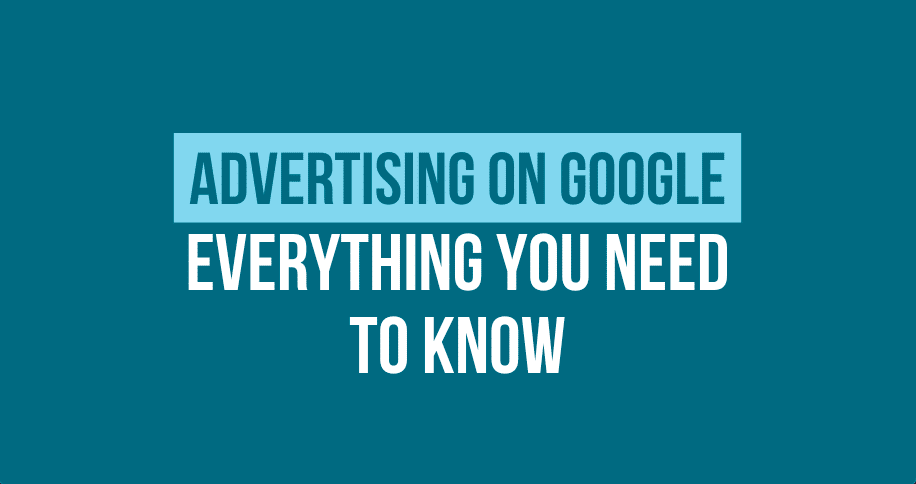Cost per action (CPA) is an online marketing model where advertisers only pay for successful conversions. This type of advertising allows businesses to acquire leads or customers at a much lower cost than other forms of online advertising, such as pay-per-click (PPC).
CPA works by setting up marketing campaigns targeting specific audiences and tracking users’ actions when they view an ad or visit a website. If the desired action is taken, then the advertiser pays for it.
What is the Cost Per Action?
Cost Per Action (CPA) is a pricing model used in internet advertising through which advertisers pay only when a desired action is taken. Everyday actions include clicks, leads, and sales.
This model has become increasingly popular among businesses and marketers as it allows for greater control of their campaign budgets and eliminates unnecessary spending on irrelevant or ineffective traffic sources.
Where to Use CPA?
CPA can be used in almost any industry, from e-commerce to financial services. In the simplest terms, CPA works by setting a predetermined cost for each desired action that the advertiser desires from their online audience.
For instance, if an advertiser wants to generate leads for their product or service, they would set up a CPA campaign where each lead generated would have a predetermined cost (e.g., $2 per lead). Then, the advertiser will pay this amount each time someone completes a lead form on their website or takes other desired actions.
Why is Cost Per Action Important?
Track ROI (Return on Investment)
CPA is especially beneficial for those companies that rely on digital marketing methods such as search engine optimization, pay-per-click, or display ads. It gives them an easy way to measure their return on investment (ROI).
For example, if a company spends $1,000 on display ads but only gets $500 in return, they know that the ads were ineffective and need to be adjusted or replaced. Similarly, if they spend $2,000 and get back $4,000, they know that the campaign was successful.
Determine the Right Channels
Another reason CPA is vital is that it helps marketers identify which channels are most effective in driving leads and sales.
For example, suppose a company discovers that most of its customers come from social media platforms or advertising platforms like Facebook or Twitter. In that case, it can focus on those campaigns rather than investing heavily in other channels like radio or print advertisements. This will help them boost revenues while keeping costs low.
Cost Per Action vs. Cost Per Acquisition
The main difference between Cost Per Action and Cost Per Acquisition lies within their respective goals.
The Real Difference
CPA focuses on getting consumers to interact with ads, while CPA tailors towards generating sales or business leads. The success of both models relies heavily on how compelling the advertisement’s call-to-action is — if it fails to catch viewers’ attention, then it will be easier for both models to generate profit in return for the advertiser’s investment.
They can differ based on pricing structure – most CPA campaigns require payment after the completion of the action. In contrast, some CPA campaigns may require upfront payments before any action has taken place.
Cost Per Action(CPA) vs. Cost Per Click (CPC)
Cost Per Action (CPA) and Cost Per Click (CPC) are two different ways to measure the cost of advertising. With CPA, you pay for each action a person takes, such as signing up for an email list or filling out a form.
With CPC, you pay when someone clicks on your ad or link. CPA requires more work from the customer than CPC but can result in higher returns if done correctly.
Cost Per Action (CPA) vs. Cost Per Lead (CPL)
Cost Per Action (CPA) and Cost Per Lead (CPL) are different ways to measure how much money is spent on advertising. CPA is the amount of money an advertiser pays each time someone takes action, like clicking on a link or buying something.
CPL measures the cost of acquiring a new lead or potential customer by tracking when someone provides contact information in exchange for something. CPA focuses more on immediate results, while CPL looks longer-term at potential customers over time.
How to Calculate Cost Per Action
Find Associated Cost and Action
The first step in calculating CPA is determining the desired action and associated cost.
For example, if a business wants to generate more traffic to its website, it may run an CPA advertising campaign focused on clicks. In this case, the desired action would be for someone to click on the advertisement link and visit the website. The cost might include any fees associated with running and managing the ad campaign, such as paying for ad placements or hiring a marketing agency.
Check CPA
Once you’ve determined your desired action and associated cost, you can calculate CPA using this formula: CPA = Cost / Actions Taken. This formula divides the total cost of your campaign by the number of actions taken (clicks, sales, etc.). Thus, if you spent $100 on your advertising campaign and generated five clicks, your CPA would be $20 ($100/5).
Knowing your CPA allows you to optimize your campaigns and maximize ROI. Comparing different CPA metrics can show which approaches work best to achieve desired goals. Understanding your past CPA helps inform future decisions regarding advertising budget allocation and campaign tactics.
How to Reduce Your Cost Per Action
Here are some tips for reducing your CPA:
1. Leverage Targeted Digital Ads
Digital advertising provides an efficient way to target your audience and reach the right people – which can help reduce your CPA. By creating ads tailored to specific audiences across social media platforms and other digital channels, you can engage with potential customers in a much more targeted way and lower your CPA. It would help if you also optimized your ad campaigns regularly by testing different ad formats and refining targeting based on performance data.
2. Optimize Your Landing Pages
When selling products or services online, having a well-designed landing page can make all the difference in reducing your cost per action. It’s essential to ensure that visitors have a positive experience when they land on your page by including relevant, valuable content, ensuring the page is easy to navigate, and providing clear instructions on what action you want them to take next.
3. Utilize Retargeting
Retargeting is a powerful tool for getting more conversions from users who have already interacted with your brand but have yet to convert initially. By serving ads specifically tailored for those users, you can increase engagement and reduce the cost of acquisition since these users already have familiarity with your business or product offering.
4. Focus on Quality Content
Quality content plays an essential role in helping boost conversion rates and reduce CPA, so take your time here! Investing in high-quality content that resonates with readers helps build trust in your brand, encourages repeat visits, and ultimately leads to higher conversions over time – all of which will help lower CPA costs in the long run.
5. Develop Long-Term Strategies
Developing strategic plans focused on long-term goals rather than short-term wins will pay off in terms of reduced CPA costs. This could include testing different creative assets, concentrating on higher-value, prospective customers rather than just volume, or launching campaigns explicitly aimed at retaining existing customers.
How to Lower Your CPA in Google Ads
Target Campaigns Properly
The first strategy for lowering your CPA in Google Ads is ensuring you have correctly targeted campaigns. Targeting the right audience will ensure that you reach those more likely to convert when they click on your ads.
Target Keywords
You can use keyword targeting, geographic targeting, demographic targeting, and other criteria to reach relevant users with tailored ad messages. Refining your targeting criteria until you find the right combination of keywords and placements for achieving the best return on investment (ROI) should help reduce your overall costs per acquisition.
Optimize Ad Frequency
Another way to reduce your CPA in Google Ads is by optimizing the frequency of your ads. Frequency capping ensures that users see only a few of the same ad repeatedly, which can lead them to become desensitized to it or even annoyed by it.
A/B Test Various Ads
It’s also essential to A/B test different versions of your ads so that you can determine which ones work best for increasing ROI and reducing CPA. Testing various components such as headline copy, image selection, color schemes, and offer types helps identify which versions perform better than others while helping keep overall costs down.
What’s the Average Cost Per Action in Google Ads?
The average cost per action (CPA) in Google Ads can vary greatly depending on the type of campaign, the industry, and geographic location.
For example: a local service business in a small city might have an average CPA of $10, while an enterprise software company operating in a larger metropolitan area would likely have an average CPA of around $50 or higher.
Google Ads campaigns are often set up with certain budget limits and CPA bids that help to ensure campaigns remain within targeted spending levels. Setting up effective budgeting for a campaign also allows advertisers to prioritize their targeting efforts and focus on audiences more likely to convert.
For this reason, advertisers must focus on understanding their target audience and setting up strategies to concentrate on the most profitable segments.
How to Optimize Cost Per Action
To maximize your CPA, you must first understand what factors influence it.
Target the Right Audience
The most crucial factor to consider is your target audience. Knowing who your potential customers are will help you create more relevant and appealing ads, increasing the chances that they will convert.
Test Multiple Ads
Another way to optimize CPA is through testing and monitoring different elements of your ads. Testing different versions of headlines, descriptions, images, or calls-to-action can give you valuable insight into what works best for each platform and audience segment.
Use Automation
Finally, utilizing automation technology can drastically improve the efficiency of managing multiple campaigns at once while still providing personalized experiences for users. Automation software allows marketers to save time by streamlining processes such as creating new ads and analyzing data more effectively than ever before.
Best Tools to Reduce Cost Per Action
While multiple methods are available, some of the best tools to reduce the CPA include A/B testing, creating targeted ad campaigns, optimizing an online presence, and creating a customer loyalty program.
- A/B testing is a method businesses use to test two versions of an advertisement or website page to determine which version performs better.
- Creating targeted ad campaigns is another tool that can be used to reduce a company’s CPA. This involves targeting certain audiences with specific ads that are more likely to convert them into buyers.
- Optimizing an online presence is also vital for reducing CPA. Businesses should ensure that their website has a high-quality design and layout that users can easily navigate without getting lost.
- Finally, creating a customer loyalty program is another excellent way for businesses seeking to reduce their cost per action (CPA). Customer loyalty programs incentivize customers who already like your product or service by offering discounts upon repeat purchases.
What is a Reasonable Cost Per Action?
Regarding what constitutes a good cost-per-action rate for an advertiser, there is no one-size-fits-all answer — it will depend on the circumstances at hand—generally speaking.
However, those successful running campaigns tend to have costs per acquisition formula that are within industry standards or lower than the average cost for similar products or services.
It’s also important not to overspend on CPA campaigns; if budgets are too tight and costs exceed what can be earned from sales, then this type of action advertising will not be profitable in the long run.
Frequently Asked Questions
What does CPA mean in marketing?
CPA stands for Cost Per Acquisition, an important metric used in marketing. It is the money to acquire one paying customer or lead through a specific advertising campaign. CPA helps measure the effectiveness of online advertising campaigns and optimize them for better ROI (Return On Investment).
Is high or low CPA good?
A high Cost Per Action (CPA) typically indicates that a business is willing to pay more for a desired action, such as a purchase or sign-up than they are with other advertising costs. On the other hand, a lower CPA may indicate that your efforts are not yielding desired results, and there’s an opportunity to optimize your campaigns for better returns.
What causes high CPA?
Various factors can cause high Cost Per Acquisition (CPA). One primary culprit is inefficient targeting. Suppose you target the wrong demographic or need to pay more attention to which ad placements and channels are most effective for your campaigns. In that case, you could quickly end up spending more money than necessary on the wrong people and in the wrong places.
Concluding Thoughts
With the right strategies in place, effective cost-per-action can be a precious tool to drive more sales at lower costs. If you’re looking for ways to improve your ROI, CPA should be one of them!




